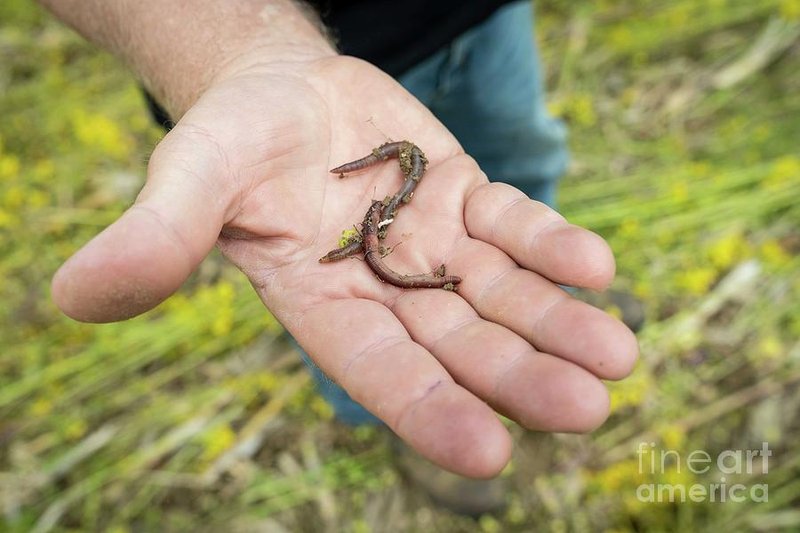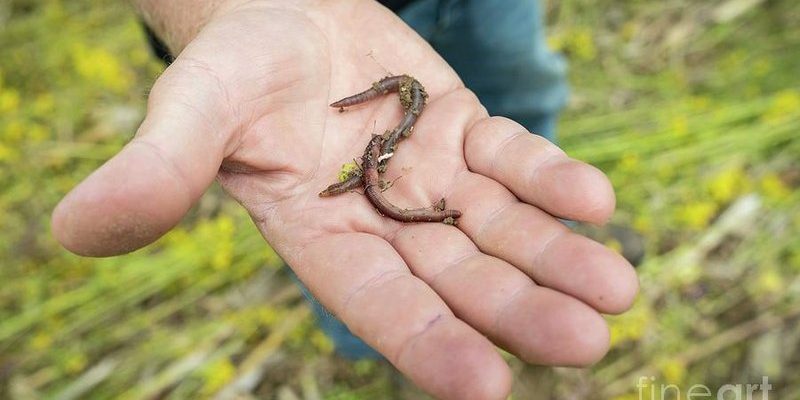
No-till farming is like setting up a beautiful garden without turning over the soil every season. Just as you wouldn’t want to disturb your carefully arranged flowers, farmers want to keep the delicate ecosystems in the ground intact. This method promotes not just conservation, but also the growth of healthy microbes and, yes, those earthworms that do so much for our crops. Let’s explore how these little soil wranglers contribute to the success of no-till farming systems.
Understanding No-Till Farming
No-till farming is a method where the soil is left undisturbed from one planting to the next. Picture it like a cozy blanket that keeps everything snug and warm. This process helps maintain soil structure, retains moisture, and reduces erosion. Since weeds are a natural enemy for crops, no-till techniques often include cover crops that suppress unwanted growth and keep the soil fertile.
Farmers using this system often plant directly into the previous year’s crop residue, which is like leaving last season’s harvest in place to protect the soil. It might seem counterintuitive at first—why would anyone want to leave old plants behind? The truth is that this residue helps to hold in moisture and provide a habitat for earthworms and other beneficial organisms.
The benefits of no-till farming stretch beyond just keeping the earth comfy. By reducing soil disturbance, farmers can lower their labor costs and use fewer resources like water and fertilizers. Honestly, it’s a win-win for both the planet and the farmer’s bottom line.
The Role of Earthworms in Soil Health
Earthworms are more than just wigglers in the dirt; they play a crucial role in maintaining soil health. You might be wondering how something so small can make a significant difference. Well, these tireless creatures aerate the soil through their burrowing activities, creating channels that improve air and water movement. Picture them as natural tunneling machines, helping nutrients get where they need to go.
When earthworms eat organic matter, they break it down into smaller particles, making nutrients more accessible to plants. This process enhances soil fertility and encourages robust plant growth—essential for any farmer’s success. If you think about it, it’s like a superhero transformation, taking old leaves and compost and turning them into a power-packed fertilizer.
Moreover, earthworm castings (their poop) are rich in nutrients and have beneficial microbes. This “worm poop” is considered black gold among gardeners and farmers alike, as it enriches the soil even further and supports a thriving ecosystem.
How Earthworms Improve Moisture Retention
One of the standout benefits of having earthworms in no-till farming systems is their ability to help retain moisture in the soil. This is especially vital during dry spells or in arid climates. Earthworms create tunnels as they burrow, which allows water to penetrate deeper into the ground. Think of it like a sponge soaking up a spill—more moisture is retained in the soil rather than running off or evaporating.
This moisture retention not only helps crops but also minimizes the need for frequent irrigation. For farmers, this means lower water bills and a more sustainable approach to farming. Here’s the thing: with changing climate patterns, every drop of water counts. Earthworms help make the most of what we have.
By enhancing moisture levels, these earthworms contribute to healthier plants and can even lead to increased crop yields. Farmers can grow more in the same amount of space, which is crucial as the global population continues to rise.
Earthworms and Soil Biodiversity
In no-till farming, promoting biodiversity is essential for maintaining a balanced ecosystem. Earthworms are just one part of a larger picture. They help foster a thriving community of microorganisms, insects, and other beneficial creatures that all work together to keep the soil healthy. This biodiversity acts like a safety net against pests and diseases, providing a natural form of pest control.
When soil is diverse, it becomes more resilient. If one species is threatened, others can step in and take its place. So, when farmers encourage earthworm populations, they’re also encouraging a varied community that interacts in complex ways.
Farmers can boost earthworm populations by incorporating organic matter, like compost or cover crops, into their no-till systems. This not only provides food for the worms but also helps maintain a rich environment for all living things in the soil. It’s a natural approach that aligns with the rhythms of nature.
Challenges to Earthworm Populations in No-Till Systems
While earthworms are key players in no-till farming systems, they face some challenges that can impact their populations. For instance, excessive use of pesticides can harm earthworms and the beneficial microbes they rely on. If farmers aren’t careful, the very creatures that help sustain their soil could be at risk.
Another factor is soil compaction. If the soil becomes too compact, it restricts earthworm movement and can negatively affect their health. Imagine trying to dig your way through concrete—tough, right? That’s what earthworms encounter when the soil is too compacted.
To counteract these challenges, farmers can adopt practices that promote the health of earthworm populations. This includes reducing chemical applications, improving soil structure through cover cropping, and being mindful of equipment used on the fields. By nurturing their tiny allies, farmers can ensure their no-till systems remain productive and sustainable.
The Future of Earthworms in Sustainable Agriculture
As awareness of sustainable farming practices grows, the role of earthworms is likely to gain even more recognition. Advocates for organic and regenerative agriculture stress the importance of fostering healthy soil ecosystems, where earthworms thrive. More farmers are beginning to see that healthy soil leads to healthy plants, which can lead to increased food production.
Incorporating more practices that benefit earthworms, such as rotating cover crops and limiting soil disturbance, can lead to a more sustainable future in farming. By treating earthworms as vital partners, farmers may find greater success and resilience in their operations.
Ultimately, this shift represents a growing understanding of the intricate connections within our ecosystems. Farmers can become guardians of the soil, ensuring that earthworms and all other organisms continue to play their essential roles in no-till farming systems.
In closing, the world of earthworms in no-till farming systems is a fascinating one. These remarkable creatures contribute significantly to soil health, moisture retention, and overall biodiversity. As we continue to learn about sustainable practices, it’s essential to recognize the vital role these little helpers play in keeping our agricultural systems thriving for generations to come. So, the next time you see an earthworm, remember: they’re not just mud-dwellers—they’re agricultural superheroes!

